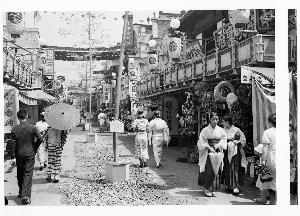Tanejiro Kurokawa
Tanejiro Kurokawa;Suizan Kurokawa
Place: Kyoto
Born: 1882
Death: 1944
Biography:
Suizan Kurokawa was a Japanese photographer born in Kyoto in 1882. He is often considered the father of Japanese pictorialism photography. His birth name was Tanejiro Kurokawa, and he was the son of a textile merchant. After his family's business went bankrupt when he was thirteen, Kurokawa began to pursue photography. In 1906, he entered a photo competition at the Sensho Kinen Hakurankai Exposition and won a silver award for his work 'Ame Ato' (After the Rain), which depicted Mount Hie. This achievement launched his career as a photographer. He was regularly published in the Osaka-based magazine Shashin Reidai-shu around 1910 and worked in the photo department of the Hakubun-kan publishing company's Kyoto office. His photographs were also featured in various photography journals and kabuki magazines during the 1910s and 1920s. Kurokawa is best known for his ethereal views of landscapes and cultural landmarks, portrayed in a style heavily influenced by sansui-ga, a traditional Japanese painting style interpreted through photography. This became his trademark and had a strong influence on many Japanese pictorialists during the peak years of 1910 to 1925. A major holding of Kurokawa's work is kept in the permanent collection of the Tokyo Metropolitan Museum of Photography.




